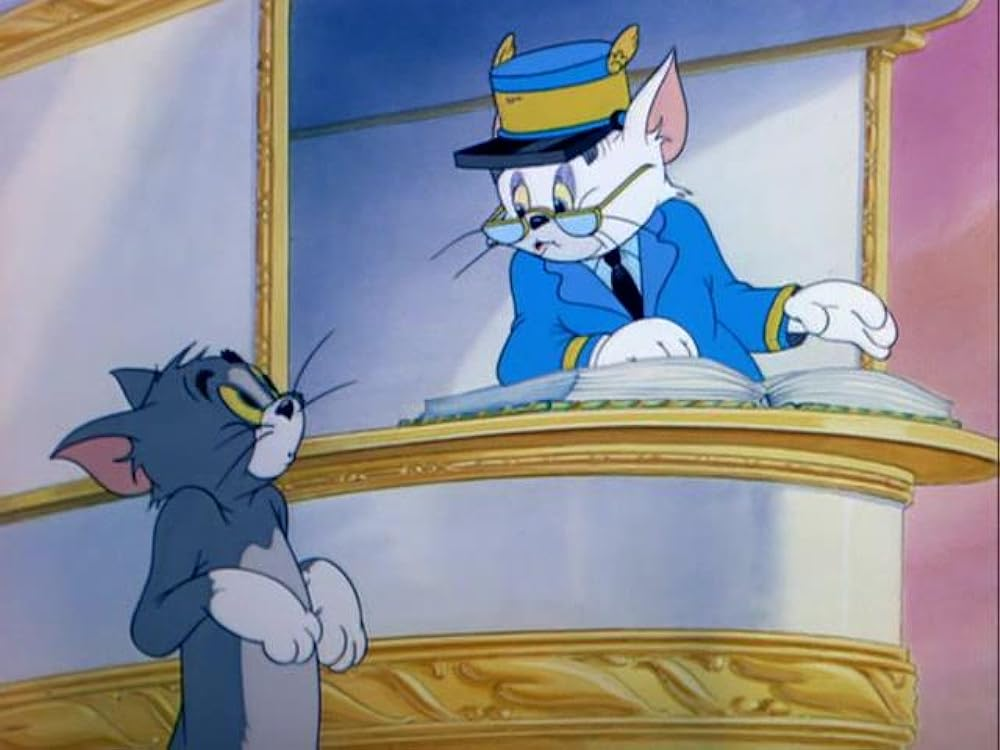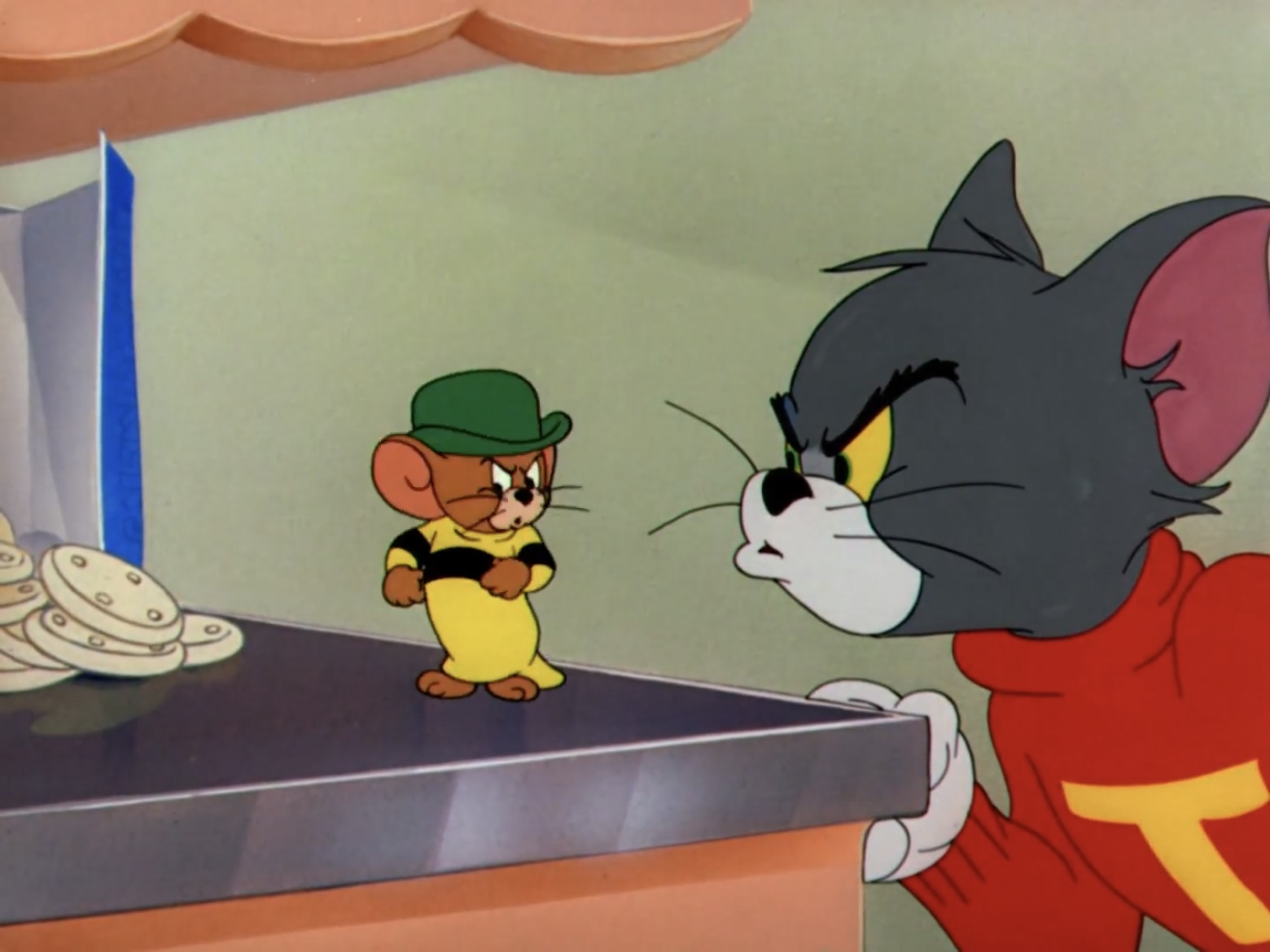
As this short film begins Tom is enjoying some nice sunbathing on the beach, when Jerry walks on top of the cat on his way to go fishing. This of course begins their usual chase. After some slapstick gags, Tom winds up underwater. There he finds Jerry has become a mermouse and the chase continues underwater.
This is a delightful cartoon. The underwater setting helps it stand out from other Tom and Jerry cartoons, as the film uses this setting perfectly. The setting leads to some especially clever gags. Jerry pretending to be a seahorse and the swordfish growling like a dog, never fail to put a smile on my face. Even the gags before the duo find themselves undersea, are wonderful here. Once again William Hanna's timing shows him at the top of his game here. The underwater setting also allows for some great visuals. I stand by my belief that the MGM cartoons were some of the best-looking cartoons of the era (only the Disney shorts really provided competition in this department). The underwater scenes here are truly a visual treat. The background art here is truly breathtaking (this is something that I believe is true about the Hanna-Barbera cartoons not only during this time period but in their limited animation TV days too (look at some of the Scooby-Doo backgrounds some time)). The background art is luscious and detailed and makes this underwater environment seem so much more real than the underwater scenes in other studio's cartoons. This is not the only visual treat here. The character animation is wonderful and Tom and Jerry feel like real breathing characters, rather than moving drawings. You can always tell just what is going through these characters' minds by just watching how they move. The only real problem with this film is that the ending can be seen coming from a mile away.
This is not the last underwater adventure Tom and Jerry would have. The cartoon duo would later appear alongside Ester Williams in a wonderful scene in the feature film, Dangerous When Wet (1953). Ester Williams was a great swimmer and her movies would often feature sequences with her underwater. This is one of the best of those sequences and the combination of live action and animation is wonderful. Though that movie was directed by Charles Walters, William Hanna and Joseph Barbera directed Tom and Jerry and the other animated characters that appear in this dream sequence.
The credited animators on The Cat and the Mermouse were Ed Barge, Irven Spence, Kenneth Muse, Ray Patterson and Al Grandmain. This film would be reissued to theaters in 1957.
Interestingly various statements in movie magazines hint at a Tom and Jerry cartoon with a similar title being a combination of animation and live action. A 1947 issue of The Film Daily states, "Forerunner of a new series of MGM cartoons is in production. New cartoon, featuring Tom and Jerry, has been titled 'The Catfish and the Mermouse.' Film 'tis said marks the first time underwater sequences are used for a cartoon. Companions of the team will be live fish." An issue of box-office magazine (dated August 9, 1947) states, "Metro’s “The Catfish and the Mermouse,” the forerunner of a new series of cartoons in which live action and animation are combined, has just gone into production." If anyone reading this knows more about this, I would love to hear.
Below is the movie poster for this short film. While the coloring is off, it is much better than the average poster for this series.













